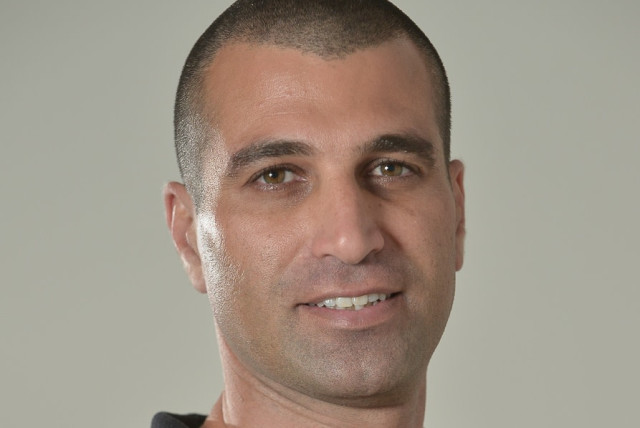Each day, 60 wounded IDF soldiers are treated for physical, mental wounds

Thousands of wounded IDF reservists need physical and emotional care, although many have returned to their workplaces.
As a large number of reserve soldiers are leaving Gaza and returning to their workplaces, many still have a long way to go because they were wounded and need rehabilitation.
According to the Defense Ministry’s rehabilitation division, from October 7 until now, a total of 5,513 wounded soldiers have been treated – averaging 60 new cases per day. Before October 7, the division treated 62,000 IDF veterans from previous wars and campaigns, with 18% suffering from psychological injuries and post-traumatic stress disorder (PTSD).
The ministry estimates that by the end of the war – whenever that will be – a total of 78,000 IDF veterans will have been treated by the division. Nearly half the wounded are aged 21 to 30, 36% are 31 to 40, and 18% are over 40. Of the wounded in combat, 84% were diagnosed with mild injuries, 9% with moderate injuries, and seven in critical condition.
Economic pressures, mental distress, and fear of exacerbating wounds during the rehabilitation process are the central challenges faced by workers returning injured from the battlefield, according to the Israel Institute for Occupational Safety and Health (IIOSH), which suggests how those who return to work can be safely reintegrated into the workforce.
Most reservists are expected to return to their workplaces at some point. The first aspect to consider is the physiological factor. The greater the pain reported by the affected individual and the physical limitations, the slower the return to work naturally. Therefore, they should be allowed to return to work, only after the level of physical exertion required is assessed.
Occupational functioning often involves repetitive movements over longer periods that can exacerbate existing injuries. Injured workers are apprehensive about being hurt again if they return to their original work situation without any changes, as repetitive movements and awkward postures are risk factors requiring intervention.
Additional factors impacting return to work
Returning to the same work environment without appropriate adjustments often leads to re-injury. Therefore, upon completion of rehabilitation, the employee must carefully assess whether they are physically fit to return to their previous job or change their job or employment conditions.
The second factor is the psychological aspect, as pain causes mental distress. Depression, anxiety, and low self-esteem significantly affect the duration of absenteeism from work. In certain cases, the level of psychological distress may be worse than physical function. His or her perception of the work environment and their self-esteem significantly influence their decision to return to work. Workers with high self-esteem are likely to return to work more quickly, according to IIOSH.
The third factor is the socioeconomic aspect. In most countries, particularly in industrialized ones, compensation systems for work-related accidents are well-established in law. However, even when medical treatment is covered, workers who have been hurt and lack savings or insurance may face economic pressures, especially if long-term rehabilitation is required.
Moreover, workers with decreased monthly wages during their absence and low wages before being wounded may take longer sick leaves. Returning to work is no longer considered solely an individual decision but rather a result of interaction between the worker and the employer. A positive work environment and organizational environment, such as work adjustments – schedules, tasks, equipment, and ergonomic adjustments speed up the return-to-work process.
A negative work environment, however, hinders the return to work. Workers who have had negative work experiences or have reported a hostile work environment tend to a slower return to work compared to those who have had positive work experiences and supportive work environments. Social support plays a vital role in helping people return to work after an injury.
Dr. Yossi Rahamim, a specialist in labor law and employment relations from Ono Academic College, commented that “unfortunately, the implications of the Gaza war will affect many aspects of our lives in the coming years. The experiences of regular and reserve soldiers are likely to significantly impact them physically and mentally and will also show up in their ability to manage relationships, family dynamics, academic studies, and, of course, the job market.
Employers must relearn the characteristics of the market and the workers and dedicate thought and resources to this so that they can accommodate such employees back into the workforce and have the necessary tools to manage and support workers who have experienced war trauma effectively.
IIOSH director-general Dr. Miki Winkler concluded that “the return of reservists to full readiness in the labor market is a test for the Israeli economy. We cannot afford to fail. The safe rehabilitation of a worker returning from the battlefield is critical. With their return, they must have a supportive work environment and safety adjustments to prevent additional harm. We are ready to provide the IDF’s guides to employers to help protect all of our brave soldiers who have returned from the battlefield to the workplace.”
Jerusalem Post Store
`; document.getElementById("linkPremium").innerHTML = cont; var divWithLink = document.getElementById("premium-link"); if (divWithLink !== null && divWithLink !== 'undefined') { divWithLink.style.border = "solid 1px #cb0f3e"; divWithLink.style.textAlign = "center"; divWithLink.style.marginBottom = "15px"; divWithLink.style.marginTop = "15px"; divWithLink.style.width = "100%"; divWithLink.style.backgroundColor = "#122952"; divWithLink.style.color = "#ffffff"; divWithLink.style.lineHeight = "1.5"; } } (function (v, i) { });

